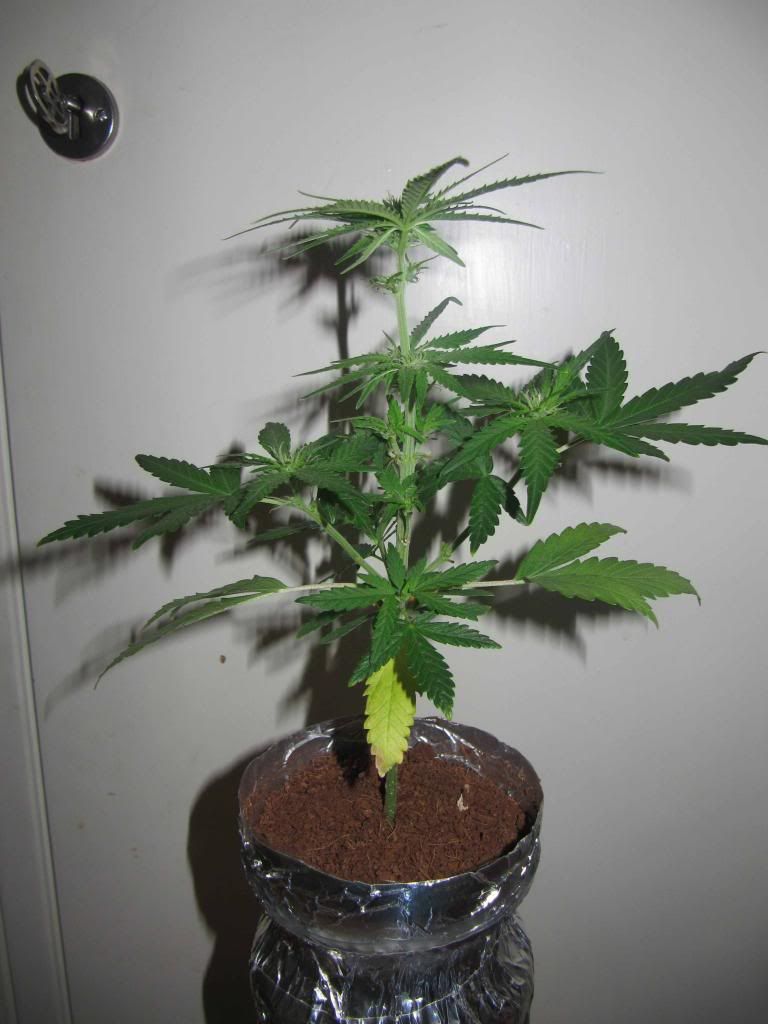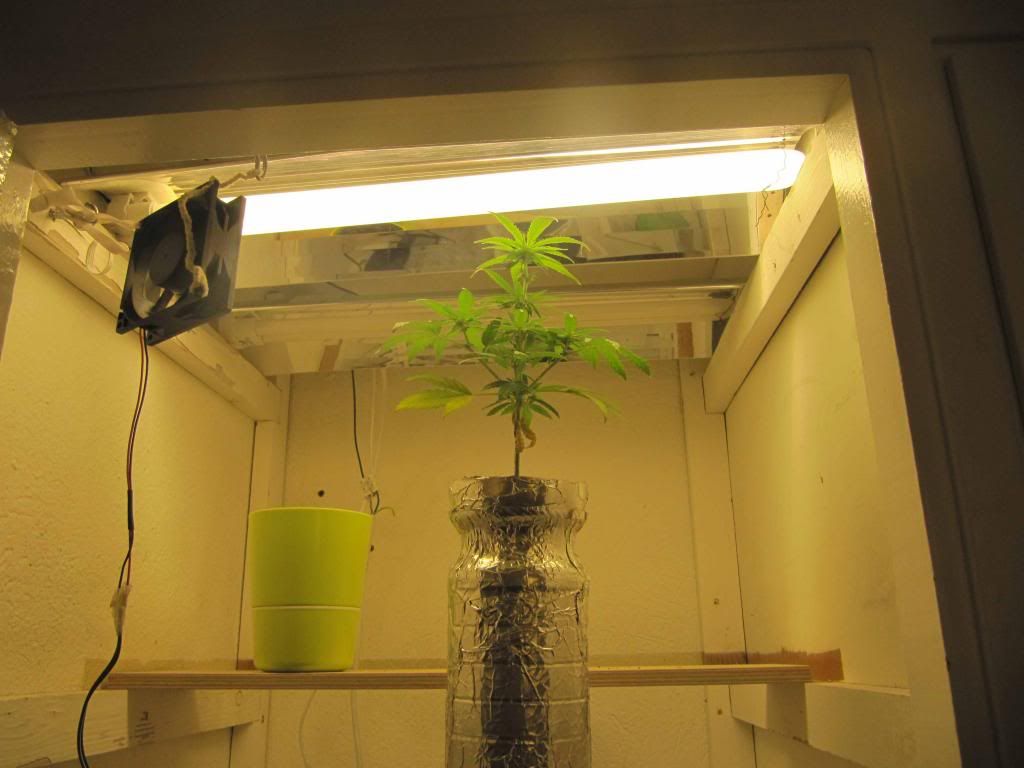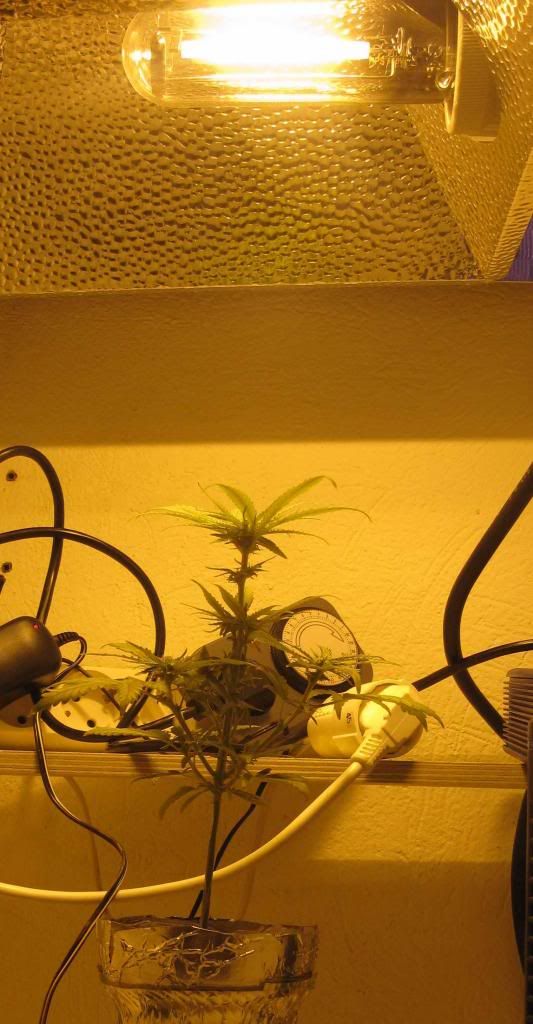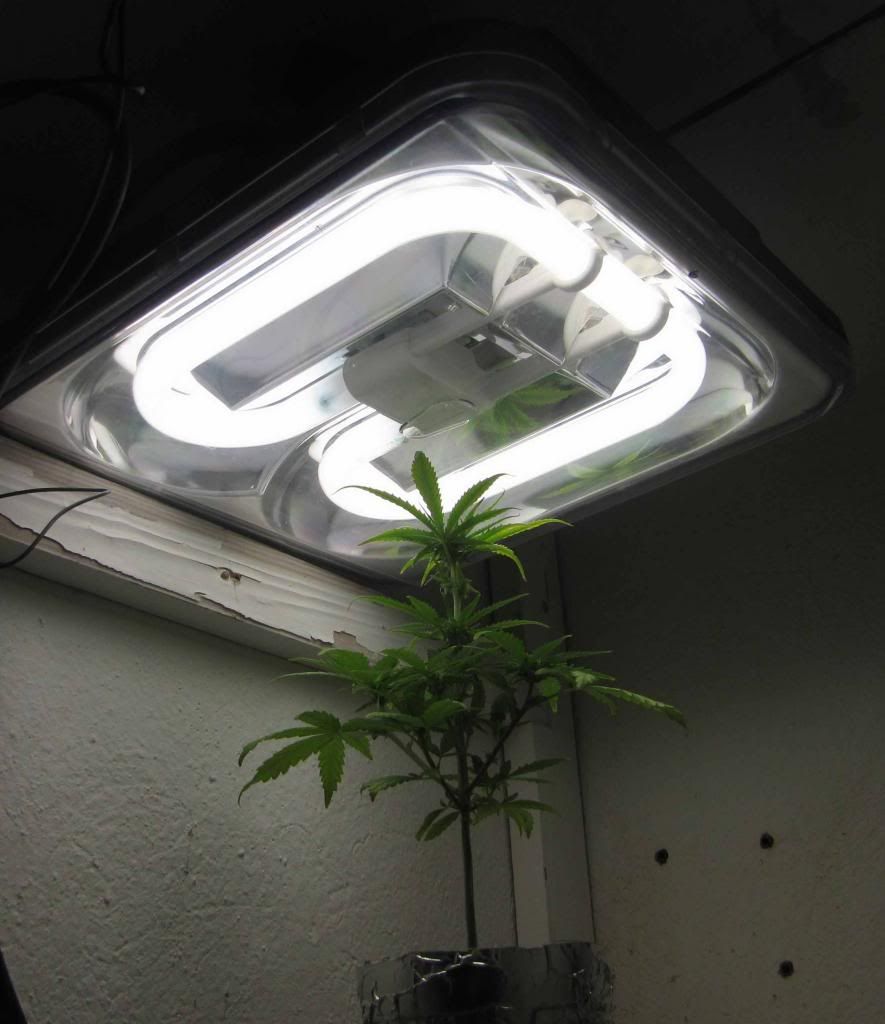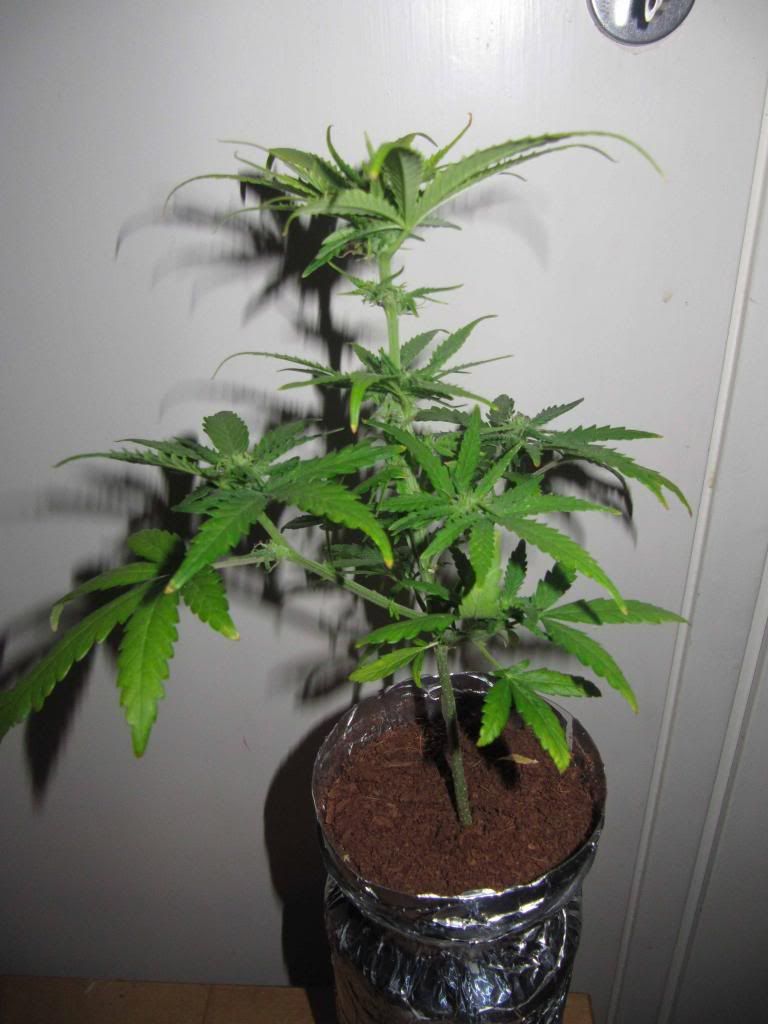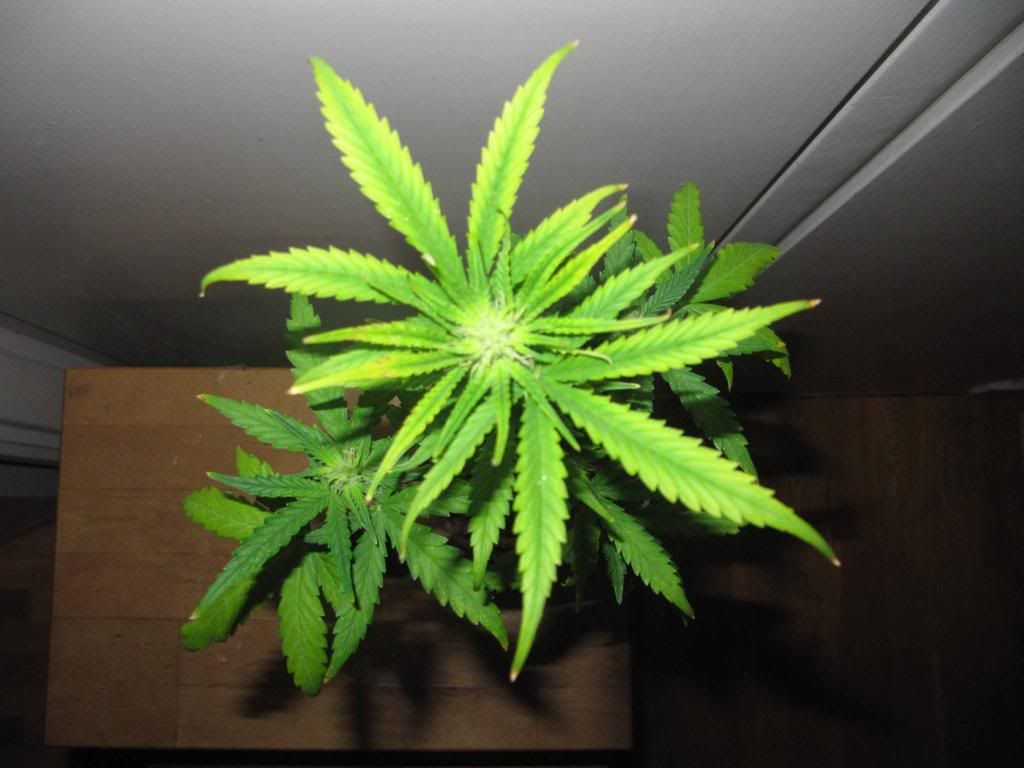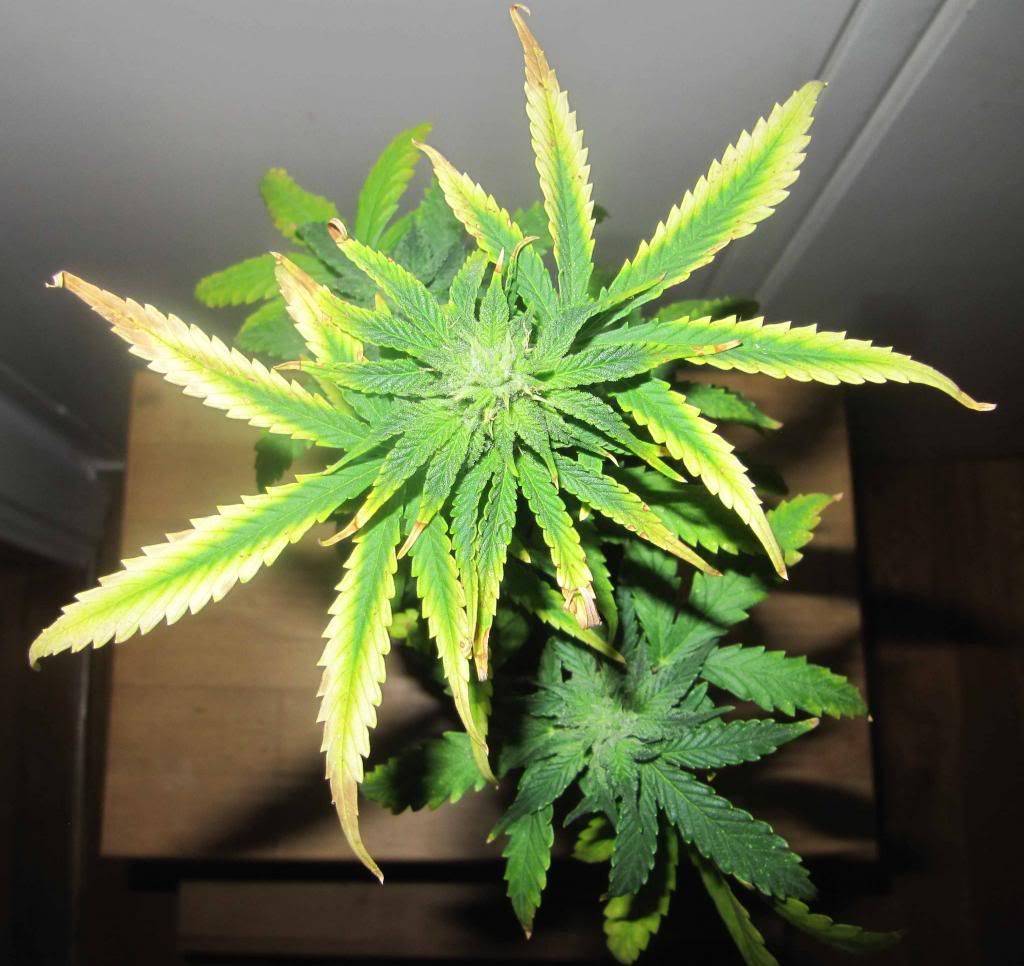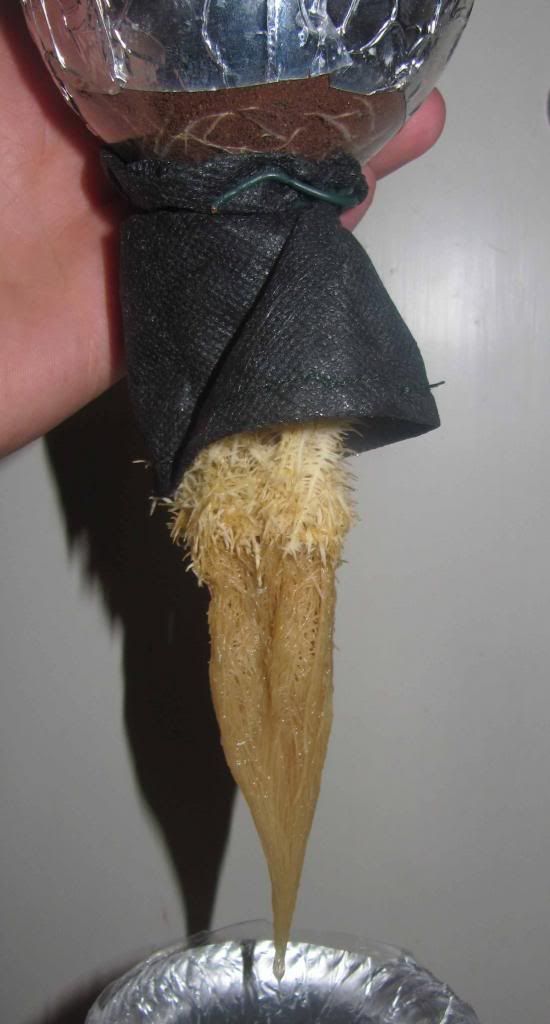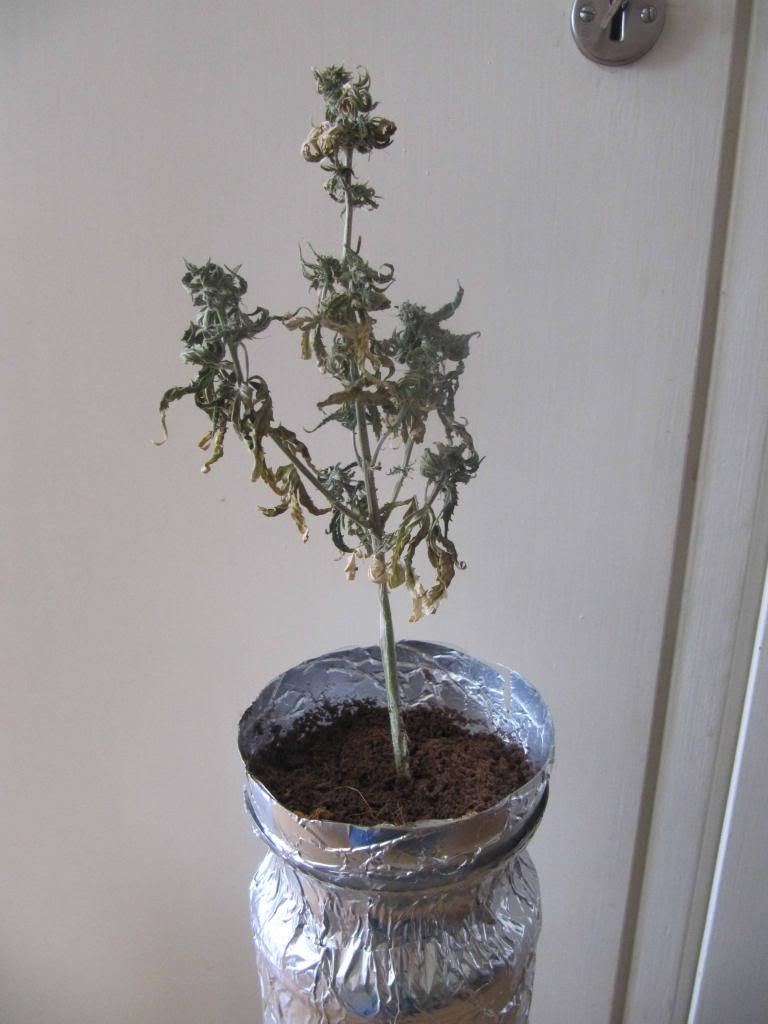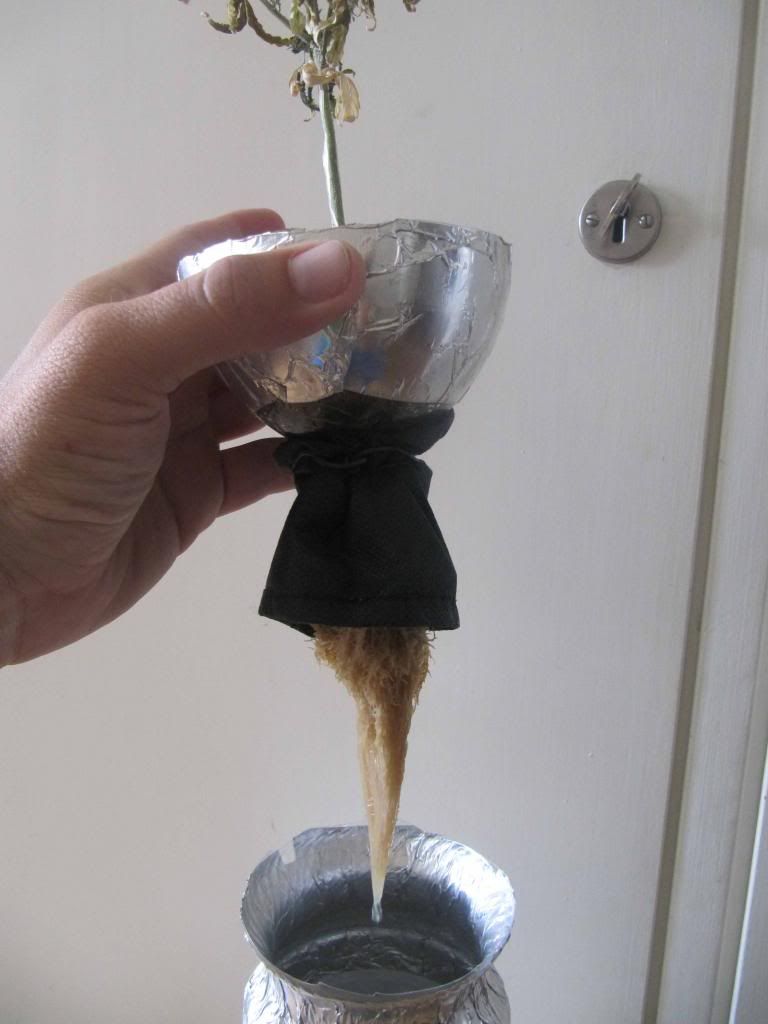Snipp snipp defoiliation. Have used defoiliation a lot and i like it. Want the plant short and bushy (hide in plain sight spot). Preflowers are showing and soon the stretch kicks in, think it was perfect time for defoiliation. I know its a hot topic (defoiliation) so let us just leave it and focus on the Kratky methode.





